The new Corsair RMx Shift series brings something innovative, a side-positioned DC connector panel. According to the brand’s claims, this provides a tremendous boost to cable management since users have an easier access to the modular panel. Moreover, all Shift models are ATX v3.o and PCIe 5.0 ready.
Corsair decided to exploit the popular RMx series, so in its new series, it uses the RMx naming scheme, but it adds a “Shift” at the end of it. This word was used because the modular panel was shifted from backward to the side. I am not sure if this change on the modular panel’s position will work on all chassis since some have special PSU compartments covering the PSU’s sides, but it is high time for the chassis manufacturers to make some changes, too.
The new Corsair RMx Shift series includes four members with capacities ranging from 750W to 1200W. In this review, I will look at the smallest member of the line. I have already posted all their reviews for those interested in discovering more about the other Shift models, so feel free to check them out.
The MSRPs of all Corsair Shift models.
- Manufacturer (OEM): CWT
- Max Power: 750W
- Cybenetics Efficiency: [115V] Gold (87-89%)
- 80 Plus Efficiency: Gold
- Noise: Cybenetics A+ (15-20 dB[A])
- Compliance: ATX12V v3.0, PCIe 5.0, EPS 2.92
- Alternative Low Power Mode support: Yes
- Power 12V: 750W
- Power 5V + 3.3v: 150W
- Power 5VSB: 15W
- Cooling: 140 mm Fluid Dynamic Bearing Fan (NR140P)
- Semi-Passive Operation: Yes
- Modular Design: Yes (Fully)
- High Power Connectors: 2x EPS (2x cables), 3x PCIe 6+2 pin (2x cables), 1x PCIe 12+4 pin (600W)
- Peripheral Connectors: 12x SATA (3x cables), 4x 4-pin Molex (single cable)
- ATX/EPS Cable Length: 610/660mm
- Distance between SATA connectors: 110mm
- Distance between 4-pin Molex connectors: 100mm
- In-cable capacitors: No
- Dimensions (W x H x D): 150 mm x 85 mm x 160 mm
- Weight: 1.66 kg (3.66 lb)
- Warranty: 10 years
Box & Bundle
The box has a sticker with ATX 3.0 compatibility at its top right side. It also speaks of a 300W 12VHPWR connector.
For quite some time, Corsair has used the Cybenetics badges on its boxes. Hopefully, they will also put them at the face of the box, where they belong!
Product Photos
A sticker informs you that it is normal if the fan doesn’t spin, and you should not RMA the PSU!
The side-mounted modular panel makes this unit look weird! I have been used to rear-mounted modular panels all these years, so it is hard for me to adapt so quickly.
Cables
| Modular Cables | ||||
| Description | Cable Count | Connector Count (Total) | Gauge | In Cable Capacitors |
|---|---|---|---|---|
| ATX connector 20+4 pin (610mm) | 1 | 1 | 16-18AWG | No |
| 4+4 pin EPS12V (660mm) | 2 | 2 | 18AWG | No |
| 12+4 pin PCIe (660mm, 600W) | 1 | 1 | 16AWG | No |
| 6+2 pin PCIe (660mm+100mm) | 1 | 2 | 16-18AWG | No |
| 6+2 pin PCIe (660mm) | 1 | 1 | 16AWG | No |
| SATA (460mm+110mm+110mm+110mm) | 3 | 12 | 18AWG | No |
| 4-pin Molex (450mm+100mm+100mm+100mm) | 1 | 4 | 18AWG | No |
| AC Power Cord (1370mm) – C13 coupler | 1 | 1 | 18AWG | – |
There are no in-cable caps, and the provided cables and connectors are sufficient to deliver the PSU’s full power effortlessly. I would like to see a longer distance between the peripheral connectors.
Protection Features
|
OCP (Cold @ 28°C) |
12V: 76.6A (122.56%), 11.997V |
|
OCP (Hot @ 42°C) |
12V: 76.8A (122.88%), 12.018V |
|
OPP (Cold @ 29°C) |
919.09W (122.55%) |
|
OPP (Hot @ 44°C) |
923.10W (123.08%) |
|
OTP |
✓ (136°C @ 12V Heat Sink) |
|
SCP |
12V to Earth: ✓ |
|
PWR_OK |
Proper operation |
|
NLO |
✓ |
|
SIP |
Surge: MOV |
OCP at 12V and OPP are correctly set. On the other hand, OCP on the minor rails is set a bit high, especially in the 3.3V rail. But there are no load regulation or ripple issues. All other protection features are present too, and working well.
Part Analysis
| General Data | – |
| Manufacturer (OEM) | CWT |
| PCB Type | Double-Sided |
| Primary Side | – |
| Transient Filter | 6x Y caps, 2x X caps, 2x CM chokes, 1x MOV |
| Inrush Protection | 1x NTC Thermistor SCK207R0 (7 Ohm) & Relay |
| Bridge Rectifier(s) |
1x GBJ1506 (600V, 15A @ 100°C)
|
| APFC MOSFETs |
2x Vishay SiHF22N60E (600V, 13A @ 100°C, Rds(on): 0.18Ohm) &
1x Sync Power SPN5003 FET (for reduced no-load consumption) |
| APFC Boost Diode |
1x On Semiconductor FFSP0865A (650V, 8A @ 155°C)
|
| Bulk Cap(s) |
2x Nippon Chemi-Con (400V, 470uF & 390uF each or 860uF combined, 2,000h @ 105°C, KMW)
|
| Main Switchers |
2x Infineon IPA60R190P6 (600V, 12.7A @ 100°C, Rds(on): 0.19Ohm)
|
| Driver IC(s) |
Champion CM6500UNX
|
| Digital Controllers | Champion CU6901VAC |
| Topology |
Primary side: APFC, Half-bridge & LLC converter
Secondary side: Synchronous Rectification & DC-DC converters |
| Secondary Side | – |
| +12V MOSFETs | 4x On Semiconductor NTMFS5C430N (40V, 131A @ 100°C, Rds(on): 1.7mOhm) |
| 5V & 3.3V | DC-DC Converters: 4x UBIQ QN3107M6N (30V, 70A @ 100°C, Rds(on): 2.6mOhm) PWM Controllers: UPI-Semi uP3861P |
| Filtering Capacitors | Electrolytic: 4x Nichicon (2–5,000h @ 105°C, HD), 1x Nichicon (5-6,000h @ 105°C, HV), 1x Nippon Chemi-Con (1-5,000h @ 105°C, KZE), 1x Nippon Chemi-Con (4-10,000h @ 105°C, KYA), 3x Nichicon (4-10,000h @ 105°C, HE) Polymer: 20x FPCAP, 5x Nippon Chemi-Con |
| Supervisor IC | Weltrend WT7502R |
| Fan controller | Microchip PIC16F1503 |
| Fan Model | Corsair NR140P (140mm, 12V, 0.22A, Fluid Dynamic Bearing Fan) |
| 5VSB Circuit | – |
| Rectifier |
1x PS1045L SBR (45V, 10A)
|
| Standby PWM Controller | On-Bright OB2365T |
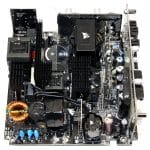

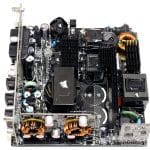
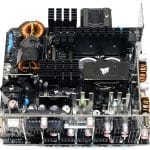
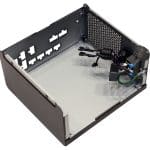
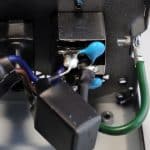



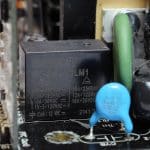
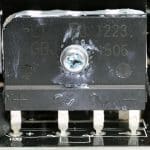
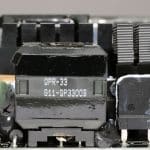
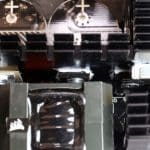
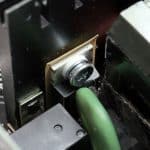
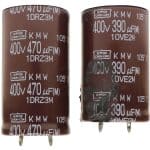
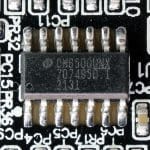
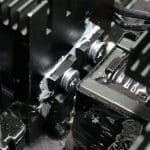
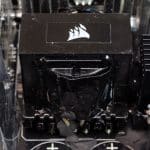
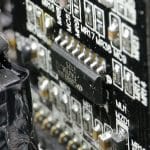

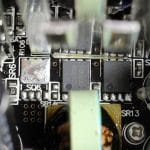
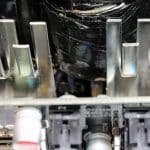
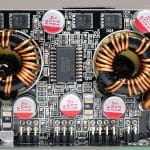
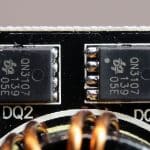
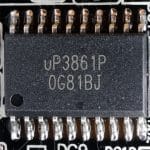
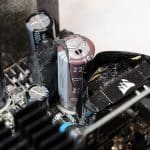
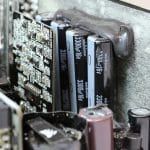
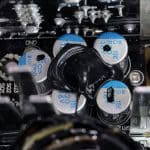
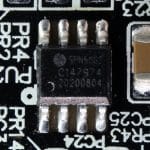
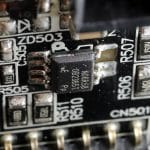
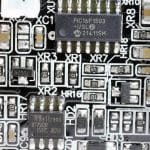
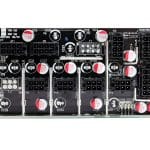
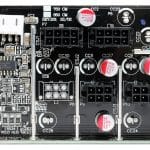
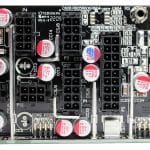
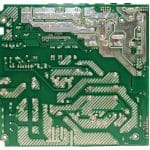
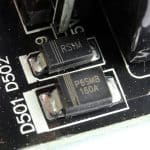
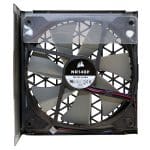

Channel Well Technology (CWT) is the OEM of all RMx Shift models. The same manufacturer builds the RMx units. The RMx Shift models have a completely different layout from the RMx, because of the PCB changes that the side-mounted modular panel required. Aside from that, most of the parts that Corsair used are the same as the RMx, including the PFC and LLC resonant controllers, the 5VSB circuit, the housekeeping IC and the PWM controllers of the DC-DC converters. The 750W and 850W use smaller PCBs than the 1000W and 1200W units, but the layout is the same. The build quality is high, and Corsair used top-notch parts to achieve high performance and increased reliability. The main differences between the 750W and 850W models with the 1000W and 1200W ones are the topology on the primary side. The former use a half-bridge topology, while the latter utilize a full-bridge one, allowing for higher power output while keeping energy losses in control. All models feature an LLC resonant converter for increased efficiency.
The APFC and resonant controllers, the DC-DC converters that generate the minor rails, the 5VSB circuit, the supervisor IC, the fan controller, and the fan are the same in all Shift models. The key differences are in the bridge rectifiers, the FETs, the NTC thermistors, the bulk caps, the filtering caps on the secondary side, and the cooling fan. Corsair decided to ditch the ML fan of the RMx unit in favor of the NR140P FDB fan, which Hong Hua provides.
Load Regulation
Ripple Suppression
| Test | 12V | 5V | 3.3V | 5VSB | Pass/Fail |
| 10% Load | 6.5 mV | 4.8 mV | 7.6 mV | 7.3 mV | Pass |
| 20% Load | 10.4 mV | 5.6 mV | 9.0 mV | 8.8 mV | Pass |
| 30% Load | 11.2 mV | 6.3 mV | 9.1 mV | 10.5 mV | Pass |
| 40% Load | 12.1 mV | 7.6 mV | 9.7 mV | 11.6 mV | Pass |
| 50% Load | 13.4 mV | 14.7 mV | 15.9 mV | 12.9 mV | Pass |
| 60% Load | 14.6 mV | 9.8 mV | 11.3 mV | 14.4 mV | Pass |
| 70% Load | 15.8 mV | 11.4 mV | 12.4 mV | 17.5 mV | Pass |
| 80% Load | 17.4 mV | 14.8 mV | 16.0 mV | 17.6 mV | Pass |
| 90% Load | 19.2 mV | 13.3 mV | 15.8 mV | 19.7 mV | Pass |
| 100% Load | 24.7 mV | 18.2 mV | 20.5 mV | 23.8 mV | Pass |
| 110% Load | 26.2 mV | 19.1 mV | 22.6 mV | 26.3 mV | Pass |
| Crossload 1 | 20.0 mV | 7.4 mV | 11.9 mV | 12.9 mV | Pass |
| Crossload 2 | 12.3 mV | 6.1 mV | 9.0 mV | 11.8 mV | Pass |
| Crossload 3 | 6.8 mV | 4.7 mV | 10.9 mV | 10.6 mV | Pass |
| Crossload 4 | 24.6 mV | 16.6 mV | 17.2 mV | 22.6 mV | Pass |
Transient Response
20% Load – 20ms
| Voltage | Before | After | Change | Pass/Fail |
| 12V | 12.083V | 11.828V | 2.11% | Pass |
| 5V | 5.050V | 4.941V | 2.17% | Pass |
| 3.3V | 3.297V | 3.196V | 3.07% | Pass |
| 5VSB | 4.960V | 4.918V | 0.85% | Pass |
50% Load -20ms
| Voltage | Before | After | Change | Pass/Fail |
| 12V | 12.037V | 11.924V | 0.94% | Pass |
| 5V | 5.043V | 4.948V | 1.88% | Pass |
| 3.3V | 3.289V | 3.182V | 3.26% | Pass |
| 5VSB | 4.923V | 4.882V | 0.83% | Pass |
Voltage drops should be lower at 12V and 5V.
Transient Response ATX v3.0 & 12VHPWR Connector Tests
The PSU passed all ATX v3.0 transient response tests with success.
Hold Up Time
The hold-up time is much longer than required.
Timings
The PSU supports Alternative Low Power Modes.
Inrush Current
Efficiency Normal, Light & Super-Light Loads
The platform is highly efficient at light loads.
Average Efficiency 5VSB
There is room for improvement in the 5VSB rail’s efficiency.
Vampire Power
Average Efficiency
The average efficiency is decent but not highly competitive for the Gold category’s standards.
Average PF
Average Noise
The average noise output is low, bottom low. Only the Asus PSU takes the lead here from the Corsair Shift unit.
Fan Noise & Speed Maps @ 28-32 °C
The PSU’s noise exceeds 30 dBA for short periods and at high loads.
Overall Performance
Overall performance is high enough, but not close to the RM750x.
Epilogue
The RM750x Shift offers a vast improvement over the plain RM750x in noise output, but it cannot meet the latter eye-to-eye in overall performance. Nonetheless, its overall performance is decent, and it is ATX v3.0 and PCIe 5.0 ready, using the new micro-fit Corsair Type 5 cables.
Load regulation is tight enough on all rails, ripple suppression is good, although not top-notch as in the RM750x, and the hold-up time is extended. I still want a better transient response at 12V in non-ATX v3.0 scenarios and improved overall efficiency. The platform is super efficient at light and super-light loads but needs a slight boost at higher loads. Lower inrush currents with 230V input would be highly welcome, too.
The major selling points of all RMx Shift units are the side-mounted modular panels, the ATX v3.0 and PCIe 5.0 compatibility, and low noise output. These units also feature a high build quality, ensuring they will outlive the extended, ten-year warranty. Kudos to Corsair for thinking outside of the box and offering a PSU with a unique design. Hopefully, chassis manufacturers will welcome this new PSU design and make their products compatible.
- Full power at 47°C
- ATX v3.0 and PCie 5.0 ready
- Unique design (side-mounted modular panel)
- Cybenetics ratings besides 80 PLUS (means extra super-tough testing)
- Top build quality
- Decent performance
- Properly set OCP at 12V and OPP
- Silent operation
- Good enough ripple suppression
- Highly efficient at light loads
- Long hold-up time
- Low inrush current with 115V
- ALPM support
- Enough connectors, including a 600W 12VHPWR
- Fully modular
- Low vampire power
- Quality, FDB fan
- 10-year warranty
- The transient response should be better at 12V
- The 5VSB rail could be more efficient
- The short distance between all peripheral connectors
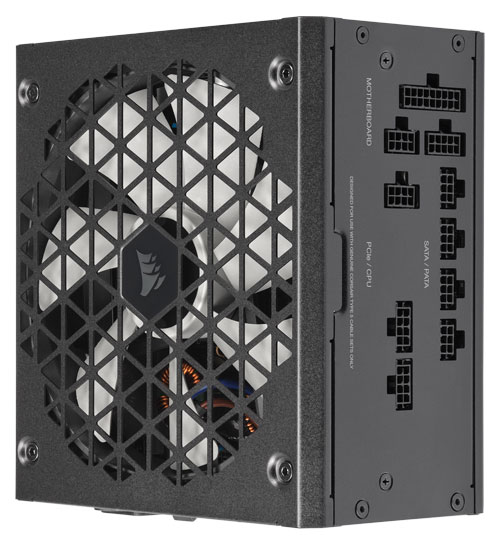

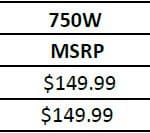

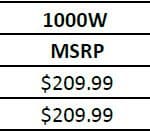
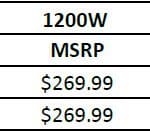
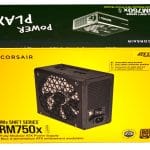
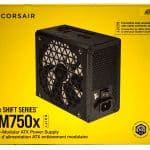
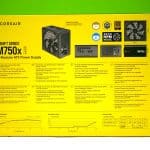
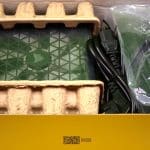

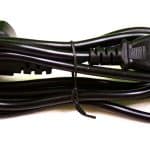
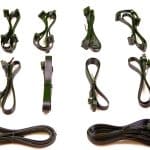
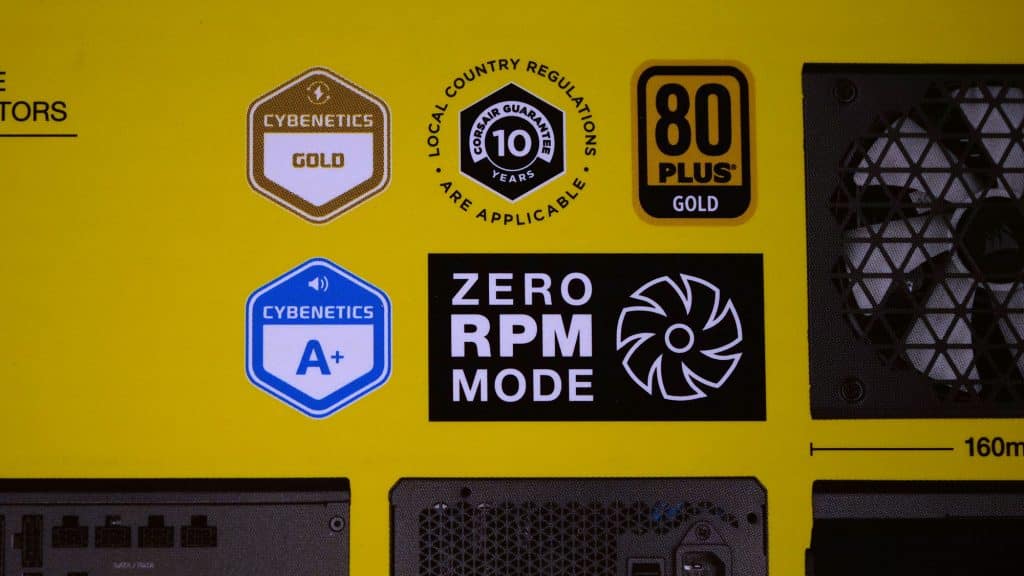
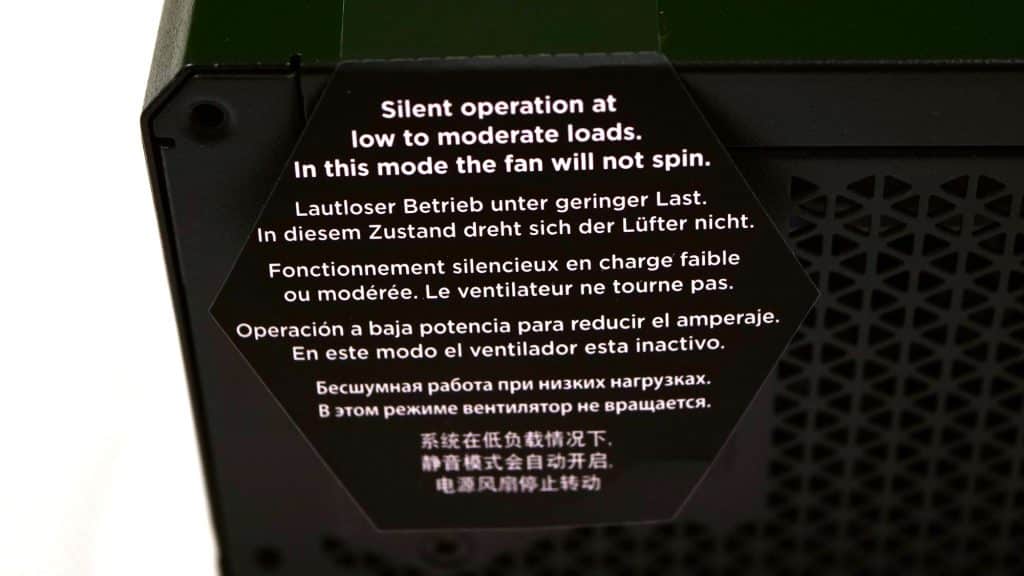
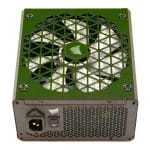
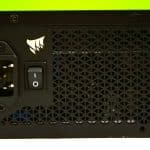

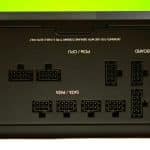
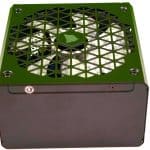


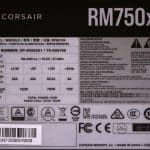
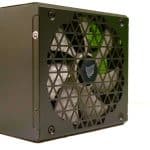
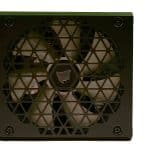
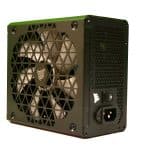
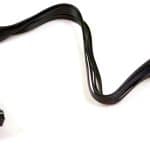
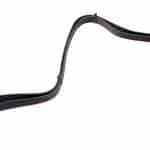
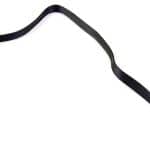
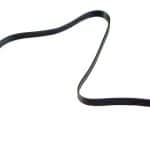



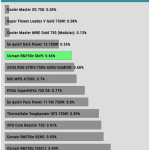


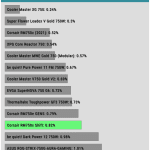
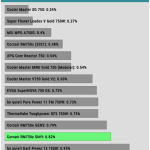
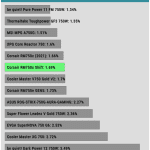
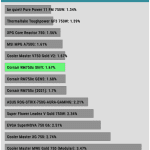
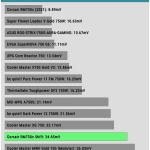
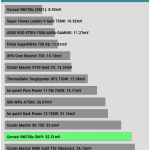
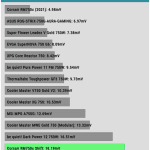
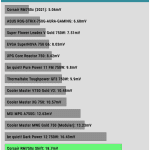
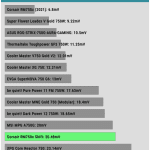
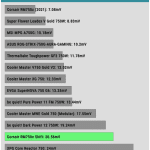

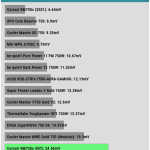

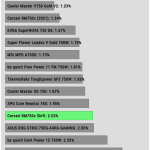
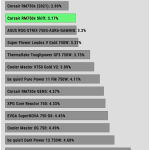

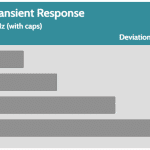
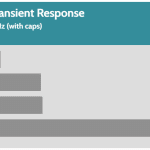



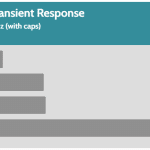
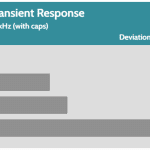
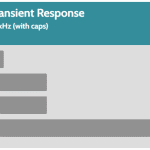
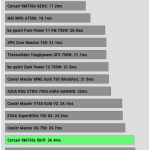
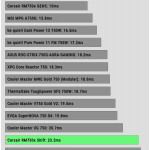
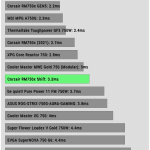
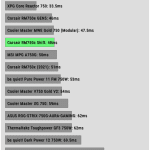
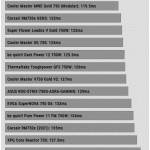
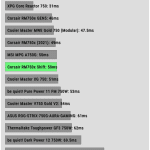
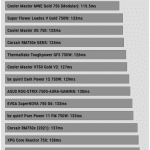

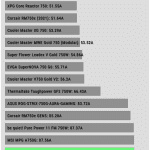
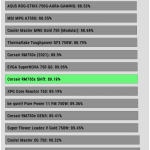
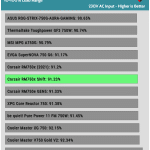
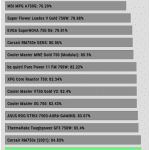
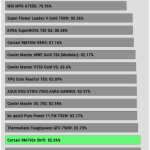
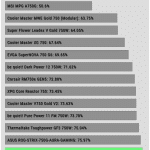
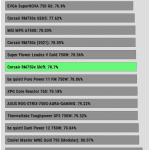

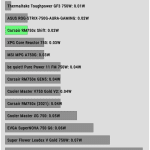




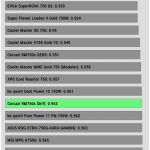
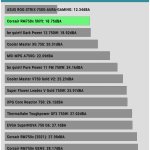
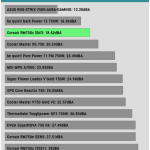
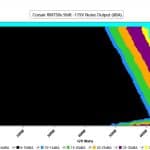
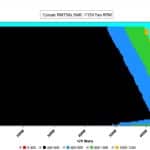
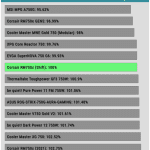
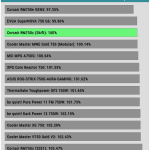



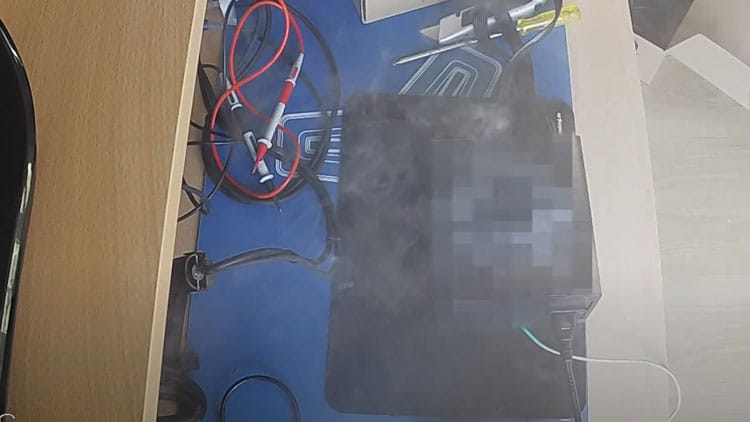
I had same units from 2017, the fan does not spinning on 300-350watt loads.
I still wonder what causes it ?
Which unit?
RM750x
Looks like you can’t directly reply to comments at a depth of 5. Time to start over I guess.
Why would they warn on the box of their PSU that it is only able to handle 300W on the 12VHPWR when it can actually deal with the full 600W load? Are they using test cases that are more extreme than what you use? Is it fear of cannibalizing into their higher rated PSUs? Market segmentation? Or is there something in the ATX 3.0 spec that requires this?
This might be the case, yes. The setting of 12VHPWR should be 300W. For logistic reasons they might ship all PSUs with 600W, this is what they did at first, at least. But normally a 750W PSU cannot have over 300W 12VHPWR, to be fully compliant with ATX v3.0 and PCIe 5.0.
Seems this comment system doesn’t like it when replies are nested too deep. My previous post was regarding the last one from gvop.
Seems to be a valid question. Why wasn’t this answered?
Which question?
Considering that there is only one unanswered question and that they pointed out that it’s about the last post by gvop:
“So, just to clarify, you always put the full 600W load on the 12VHPWR for the ATX 3.0 tests regardless of what the PSU officially supports (300W in this case)?”
Exactly.
Why would they warn on the box of their PSU that it is only able to handle 300W on the 12VHPWR when it can actually deal with the full 600W load? Are they using test cases that are more extreme than what you use? Is it fear of cannibalizing into their higher rated PSUs? Market segmentation? Or is there something in the ATX 3.0 spec that requires this?
Did you actually test this PSU with a 600W load on the 12VHPWR? According to that sticker on the front it’s only ATX 3.0 compatible at up to 300W.
my samples had 600W 12VHPWR cables.
Yes, all of Corsairs 12VHPWR cables can handle a 600W load.
What I meant was, whether you also put said load on the PSU via the 12VHPWR during your test.
We always load them because we conduct ATX v3.0 tests on all compatible PSUs.
So, just to clarify, you always put the full 600W load on the 12VHPWR for the ATX 3.0 tests regardless of what the PSU officially supports (300W in this case)?